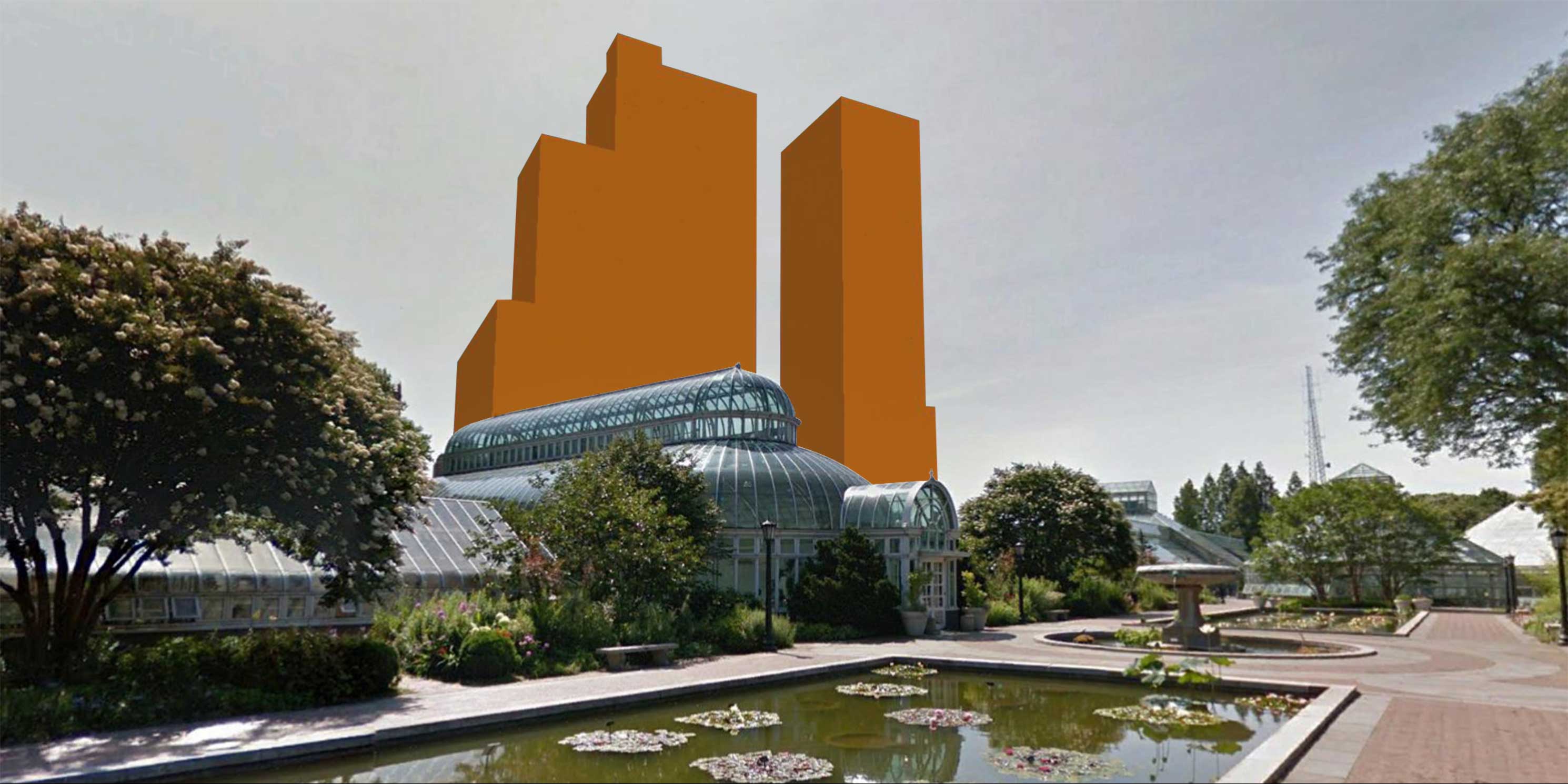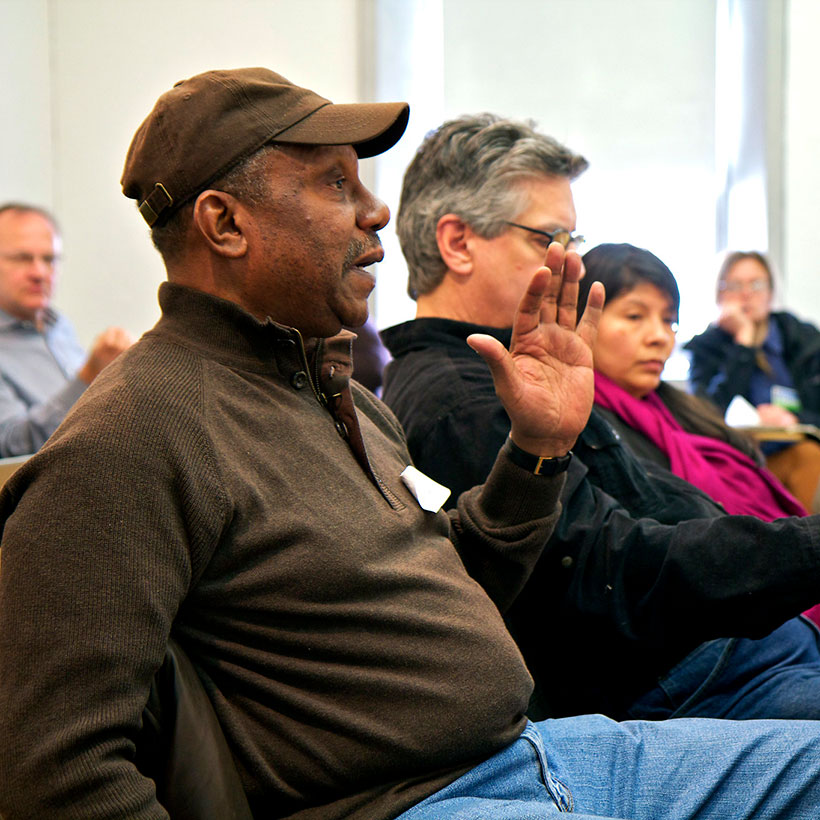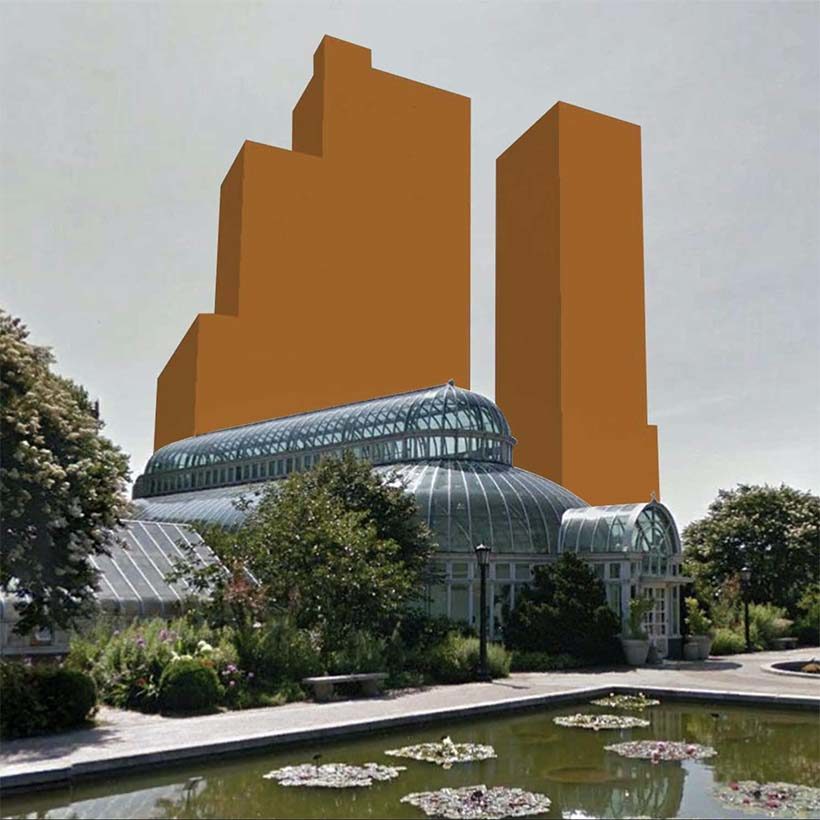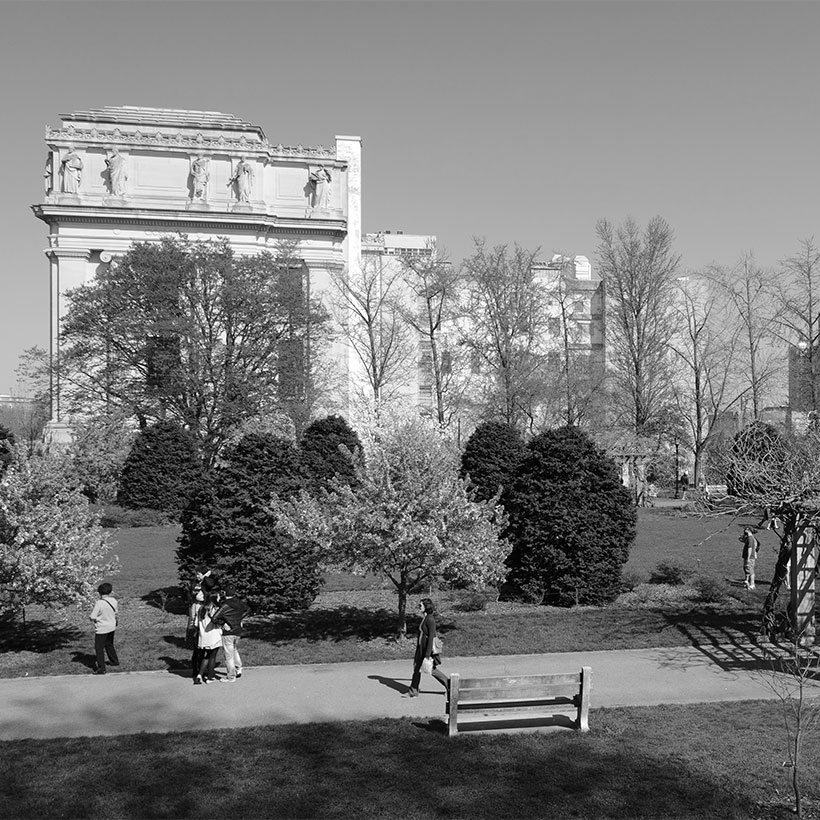Letter to the City Planning Commission Regarding 960 Franklin Avenue
Joint Letter from MAS and Brooklyn Botanic Garden
Marisa Lago, Chair
City Planning Commission
Equitable Life Building, 31st Floor
120 Broadway
New York, NY 10271
Dear Chair Lago and City Planning Commissioners,
Thank you for the opportunity to share additional commentary on the impacts that the proposed 960 Franklin Avenue development would have on cherished community spaces in Crown Heights, specifically Brooklyn Botanic Garden (BBG), Jackie Robinson Playground, and Medgar Evers College. To be clear: this project would have disastrous effects on some of Crown Heights’ most heavily frequented open public places, a neighborhood already identified by the City as underserved by open space. Even the Developer’s own DEIS and the Arborist Report make this evident.
Our analysis is limited to the original proposal by the Developer, rather than the new, illusory project advanced at the July 29th hearing. We will refrain from judgement as to the theatrics and tactics employed in their gambit to subvert the City’s review process.

Third party research by MAS and BBG evaluates additional metrics
Independent researchers were hired by The Municipal Art Society and Brooklyn Botanic Garden to address the shortfalls of the current DEIS, which, as you know, looks at the duration of only new shadows on sunlight-sensitive resources, per CEQR Technical Manual requirements. This new body of research provides a more comprehensive understanding of the impacts by studying access to sunlight, thermal comfort, and impacts on specific plant species, as well as thermally beneficial sunlight which tells us about the impacts of shadows on human use of open spaces.
Five measures reveal a more dramatic set of impacts than previously understood.
- Daily light integral: The proposed development would cost BBG greenhouses more than 10 days of daylight in each collection and 30 days in the Tropical and Aquatic collections. Lost days are concentrated during the growing seasons in the shoulder months. Overall summer light levels are also significantly reduced.
- Shadow increases: The proposed development will increase shadows across BBG collections, from 1 to 2 hours in March to up to 3.5 hours in June. The Tropical, Aquatic, and Desert plant collections, which are highly sensitive to reductions in sunlight, will be the most affected because of their proximity to the proposed buildings, just 150 feet to the east.
- Winter daylight access: Streets and sidewalks surrounding the project site will lose 100% of the current sunlight levels during winter months when sunlight is most precious. Surrounding streets and public spaces beyond this immediate impact zone would lose up to 1.5 hours of sun per day during the winter.
- Street tree survival: Trees along Franklin Avenue, McKeever Place, and in Jackie Robinson Playground would lose 6 or more hours a day of direct sunlight, representing a loss of 9 weeks of their growing season. Trees along Montgomery Street and in the Medgar Evers College campus would also lose several weeks of adequate sunlight during the growing season.
- Thermal comfort: Medgar Evers College and Jackie Robinson Playground will experience the greatest impact on thermal comfort, a combination of outdoor conditions that contribute to human comfort outdoors. In February when the need for sunlight is especially acute, losses would be greater than 2.5 hours in these areas and along BBG’s pathways.
Vulnerable Plant Collections
The collections most vulnerable to loss of sunlight are displayed in the Garden’s Conservatory complex. These collections and examples of rare or endangered plants they hold are highlighted below:
- Orchid collection. The orchid collection holds thousands of tropical and subtropical orchids from around the world, including 100 Vanda orchids, well known as some of the most sunlight-dependent orchid species. The Vanda genus occurs in tropical Asia, close to the equator, where it has evolved to grow high in sun-drenched tree canopies with consistent day-length throughout the year. BBG’s specialist growers predict that these orchids, which include rare and protected specimens, would be the first to suffer, stop flowering, and die out.
- Impact on the Desert collection. Cacti, succulents, and wildflowers native to arid regions of the world are represented in the Desert collection, with plants that evolved to grow in full sunlight. The collection includes a number of at risk, International Union for Conservation of Nature (IUCN) Red List–protected species such as the Alluaudia, endemic to arid forests of Madagascar and well known as a food source and habitat for ring-tailed lemurs. Damage to BBG’s collection harms its responsibility to carry on ex-situ plant conservation.
- Impact on the Tropical collection. Featuring plants from tropical regions of the Amazon basin, African rainforest, and tropical eastern Asia, this collection requires high light levels to penetrate the 65-foot-tall rainforest canopy. Rare and endangered species at risk for loss of sunlight here include many rare cycads such as the endangered Dioon spinulosum, from Mexico, protected on the IUCN Red List.
- Impact on the Lily Pool Terrace. Constructed in 1919, Lily Pool Terrace is a unique, formal landscape showcasing hardy waterlilies and sacred lotus, and flanked on its long sides by the Annual and Perennial Borders. The annual borders are replanted for seasonal interest through the year, with bulb displays in the winter and spectacular summer displays tied into BBG’s educational and programmatic themes. The terraces are elevated above the surrounding ground level, catching sunlight year-round and over a long period of the day. The perennial plantings within the pools are reliant on winter sunlight to prevent excessive periods of ice formation. The seasonal plantings on the Annual Borders have a short window for growth, and the west-facing aspect on the terrace allows for morning and midday sun to reach down to the plants and their beds. Benches surround the pools on the terrace are well used at all hours of the day and all seasons–especially as the terrace offers year-round interest, access, and proximity to amenities. If 960 Franklin were allowed to move forward, Lily Pool Terrace and the surrounding plantings would lose around 1.5 hours thermally beneficial sunlight in winter mornings. Compared to an as-of-right development that followed the existing zoning regulations, the proposed project would reduce morning daylight by 1 to 2 hours from August to May.
Public space impacts
- Jackie Robinson Playground. Inspired by former Crown Heights fixture Ebbets Field, Jackie Robinson Playground offers recreational space to children and adults. Due to the relatively low urban density around the 960 Franklin Avenue site, there is sunlight year-round. Access to daylight is particularly important during the colder months of the year, when the presence or lack of sunlight can be the difference between physical comfort and discomfort for recreation. If 960 Franklin were advanced as proposed, Jackie Robinson Playground would receive just 2.6 hours of thermally beneficial sunlight in winter, far less than the ideal threshold of 4 hours. Compared to an as-of-right development that followed the existing zoning regulations, the proposed project would reduce winter daylight by nearly 2 additional hours. The greatest impacts would be on the basketball and handball courts and the fitness equipment in the southern end of the playground, parts of which would receive less than 2 hours of daylight on cold winter days. The play structures and seating areas at the northern end of the playground would also experience up to an hour less of thermally beneficial sunlight compared to the as-of-right condition.
- We have learned through contacts at Medgar Evers College that they believe their new Bedford Avenue Building Beautification project, whose outdoor campus includes lawns, trees, and gardens, would be harmed by shadow from the development. Shadow impacts there would be experienced every afternoon with the longest shadows extending in winter.
In short, this project’s impact on available sunlight would drastically reduce the usability of these recreation spaces for Crown Heights families during the months of the year when sunlight is most essential.
This project is wrong for our community and our garden. We urge the Commission to reject it.
Sincerely,
Elizabeth Goldstein
President
Municipal Art Society
Adrian Benepe
President
Brooklyn Botanic Garden



